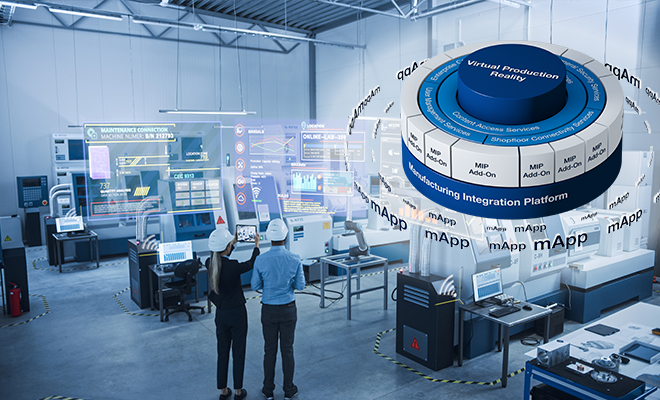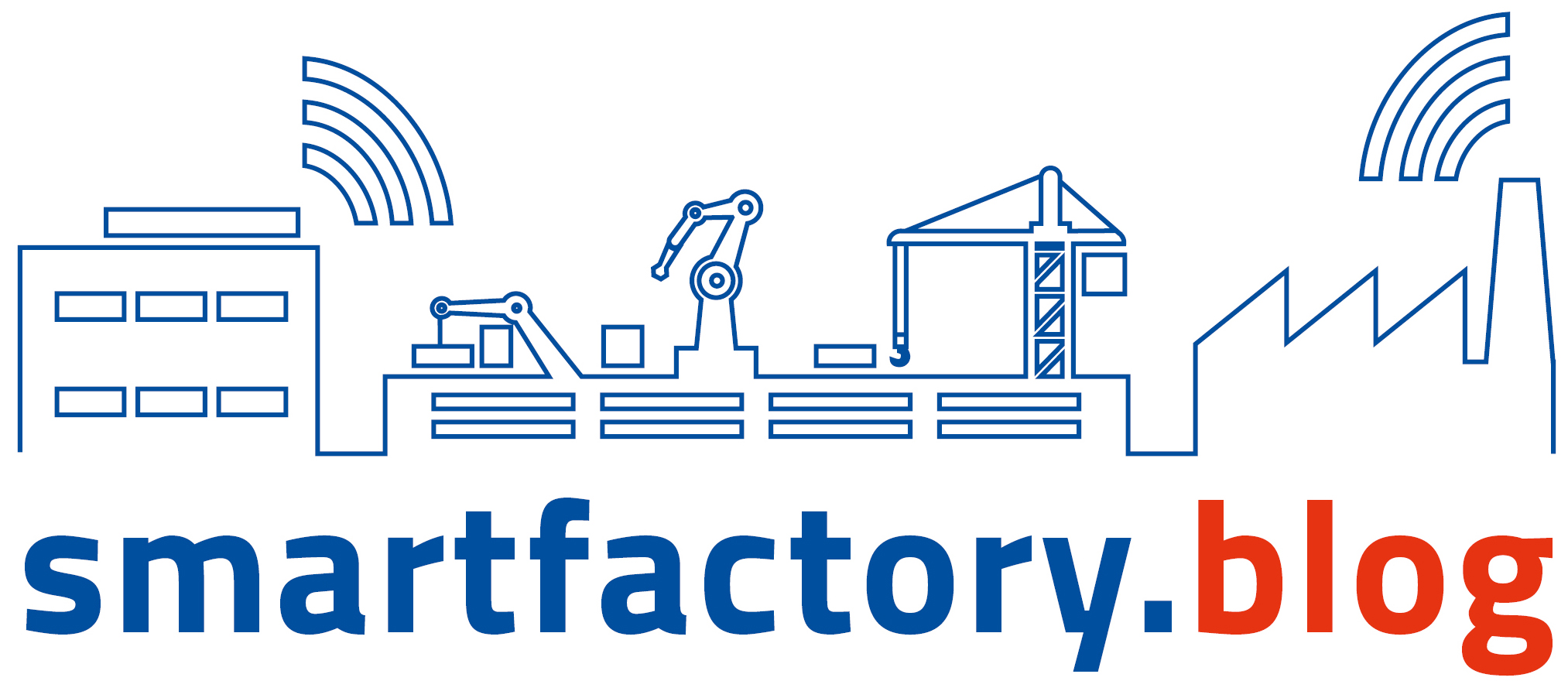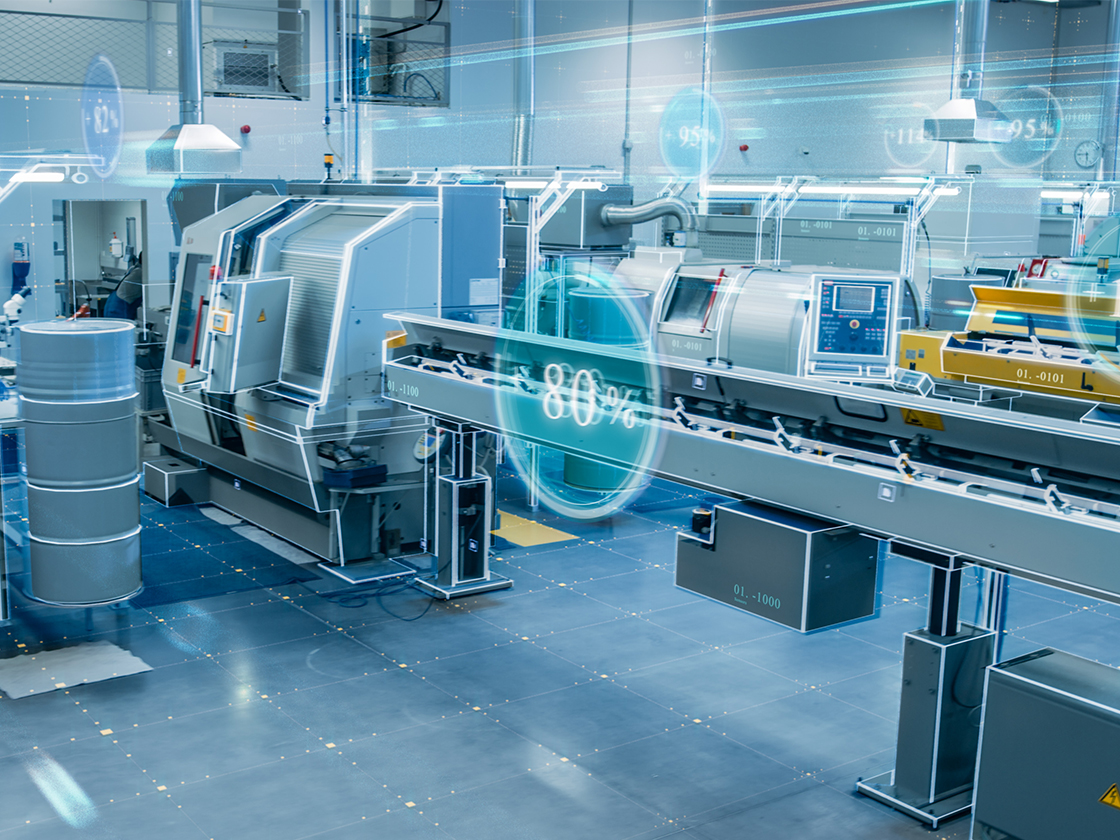Today, the term "digital twin" has become a buzzword in marketing communication. Definitions are abundant and each has a different focus. That is why hardly anyone knows what is really meant by the digital twin and what it can do. Since the digital twin is of immense importance for manufacturing IT, this article outlines how MPDV interprets it and what benefits it can bring to users. The digital twin comes into play in the MPDV product portfolio primarily in connection with the Manufacturing Integration Platform (MIP) - the MIP is where the digital twin of manufacturing comes to life.
But where does the term "digital twin" originate from? The term comes from the Apollo program of the 1960s - remember, the first flight to the moon. Back then, the lunar module that was to land on the moon was built twice - once as the flying original in space and as a replica on earth. Major parts of the replica were not built for real, but merely simulated. This made it possible to evaluate the behavior and the handling of disturbances on earth without endangering the astronauts on the moon. This concept also shaped today's digital twin to some degree.
Current definition of the digital twin
IBM defines the digital twinas a virtual representation of an object or system that spans its lifecycle, is updated from real-time data, and uses simulation, machine learning and reasoning to help decision-making. Other experts speak of a digital representation, a digital shadow, or an avatar. However, most definitions have one thing in common: the aim is to make data and information about an object or asset available in the digital world and to simulate its behavior on this basis.
Digital twin in production
The Smart Factory needs a digital twin. Machines and tools as well as products in their various stages must be digitally mapped. This is the only way to make production transparent. Before general digitalization, people used loads of paper to exchange information. Modern technology makes it possible to map production in real time - digitally, automated, and completely without paper. The digital twin is an ideal companion in production and in fact we need several digital twins to represent different aspects. The following characteristics and functions are needed for the digital twin to become a real representation of production: Vor der allgemeinen Digitalisierung verwendete man jede Menge Papier, um Informationen auszutauschen. Die moderne Technologie macht es möglich, die Produktion in Echtzeit abzubilden – digital, automatisiert und ganz ohne Papier. Der digitale Zwilling stellt dafür ein passendes Konzept dar. Genauer gesagt sind es mehrere digitale Zwillinge, die unterschiedliche Aspekte der Produktion abbilden. Damit aus einem virtuellen Abbild ein echter Zwilling wird, braucht es folgende Eigenschaften und Funktionen:
- Detailed replication of the asset and its behavior
- Constant exchange with real asset or system
- Bidirectional connection to exchange control commands
- Standardized interaction interfaces
- Best possible accessibility and availability
- Secure access
Semantic data model
In der Smart Factory kommunizieren sowohl unterschiedliche Anwendungen mit den digitalen Zwillingen als auch die digitalen Zwillinge untereinander. Damit das funktioniert, braucht es eine standardisierte Struktur und idealerweise auch einfache Wege, um auf Daten und Dienste zuzugreifen. Dafür eignet sich ein semantisches Datenmodell (auch Unified Namespace genannt), das sowohl die Daten und Dienste selbst als auch deren Beschreibung enthält. So weiß jede Anwendung, was die jeweiligen Daten bedeuten bzw. was der Dienst leistet. Kennt jeder Teilnehmer der Smart Factory dieses Modell, so können vernetzte und interoperable Lösungen entstehen und für mehr Effizienz sorgen.
Integration platform MIP
One way to give the digital twins of manufacturing a space to live is with an integration platform. In the Manufacturing Integration Platform (MIP) by MPDV, the Virtual Production Reality (ViPR) is responsible for keeping all digital twins stored and allowing applications from different providers to access them. The MIP is basically the operating system of the Smart Factory for the manufacturing industry, where applications, systems, and services can interact seamlessly with each other. The concept of the digital twin is the success factor for all this to work.

Applications that use the digital twin include solutions from MPDV such as the Manufacturing Execution System (MES) HYDRA X , the Advanced Planning and Scheduling System (APS) FEDRA , and the mApps from MIP partners. Read about the partners at MIP Marketplace.


